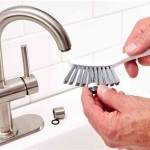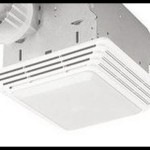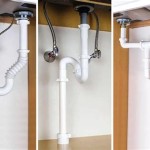How To Install A Bathroom Fan Roof Vent
Proper ventilation is crucial for any bathroom to prevent moisture buildup, which can lead to mold, mildew, and structural damage. A bathroom fan effectively exhausts this moisture, protecting the integrity of the bathroom and improving overall air quality. This article provides a comprehensive guide on installing a roof vent for a bathroom fan, a crucial component for proper ventilation.
Before commencing, gather the necessary tools and materials. These typically include a bathroom fan and housing unit, flexible ductwork, roof vent cap, roofing sealant, screws, measuring tape, utility knife, drill with various bits, reciprocating saw, safety glasses, dust mask, and gloves. Ensure the selected fan and ducting are appropriately sized for the bathroom's square footage. Consult local building codes for specific requirements.
Choosing the correct location for the roof vent is essential. Ideally, the vent should be positioned away from overhanging trees or other obstructions that could impede airflow. Furthermore, the location should provide a straight path for the ductwork from the fan housing to minimize bends, which can reduce efficiency. Inspect the attic space to ensure clear access and identify potential framing members for securing the vent.
After selecting the vent location, mark the cutout area on the roof using the roof vent cap as a template. Exercise extreme caution when working on the roof. Utilize safety harnesses and ensure the roof surface is dry and stable. Use a utility knife to score the shingles around the marked area. A reciprocating saw equipped with a metal-cutting blade can then be used to cut through the roofing sheathing. Remove the cut section carefully, exposing the attic space.
From within the attic, position the roof vent cap over the cutout and secure it to the roof decking using appropriate roofing nails or screws. Apply a generous bead of roofing sealant around the vent's perimeter to ensure a watertight seal. This step is critical to prevent leaks and water damage.
Next, connect the flexible ductwork to the roof vent cap. Secure the connection with a duct clamp or appropriate sealant. Ensure the ductwork is taut and runs in a straight line as possible to the fan housing location. Avoid kinks or excessive bends, which can restrict airflow and reduce the fan's effectiveness.
Install the bathroom fan housing within the ceiling joists, ensuring it is securely fastened. The housing should be positioned such that the ductwork can be easily connected. Follow the manufacturer's instructions for specific mounting procedures, as these may vary depending on the fan model and housing design.
Connect the other end of the flexible ductwork to the fan housing. Again, secure the connection with a duct clamp or appropriate sealant. Ensure the connection is airtight to prevent leakage and maximize airflow efficiency. After connecting the ductwork, wire the fan according to the manufacturer's instructions and local electrical codes. This step often involves connecting the fan to a dedicated circuit and incorporating a wall switch for convenient operation.
Once the wiring is complete, install the fan's cover grill and test its operation. Turn on the fan and check for proper airflow at the roof vent. Observe the vent for any signs of vibration or unusual noise. If any issues are detected, address them promptly to ensure optimal performance.
Insulate any exposed ductwork in the attic to prevent condensation and improve energy efficiency. Use insulation specifically designed for ductwork and ensure it is securely fastened.
Finally, inspect the installation from both the bathroom and the attic. Ensure all connections are secure, sealant is properly applied, and the fan is operating efficiently. Regularly check the vent cap for debris and clean it as needed to maintain optimal airflow.
Installing a bathroom fan roof vent involves multiple steps that require attention to detail and adherence to safety procedures. While this guide provides a general overview, always consult the manufacturer’s instructions for specific installation guidelines. When in doubt, consulting a qualified professional is always recommended to ensure proper installation and avoid potential issues.

Installing A Bathroom Fan Fine Homebuilding

How To Install A Bathroom Exhaust Fan Lowe S

Bathroom Exhaust Fan Installation Ventilation

Roof Flashing For Bathroom Fans

How To Install A Bathroom Fan Diy Family Handyman

Venting A Bath Fan In Cold Climate Fine Homebuilding

How To Replace And Install A Bathroom Exhaust Fan From Start Finish For Beginners Easy Diy

I Am Stuck On A Bathroom Exhaust Vent Installation Doityourself Com Community Forums

Where Do Bathroom Vents Go Lopco Contracting Ri

How To Install A Roof Vent Diy Family Handyman
Related Posts







